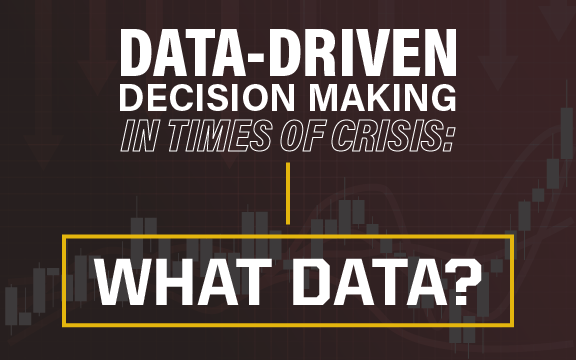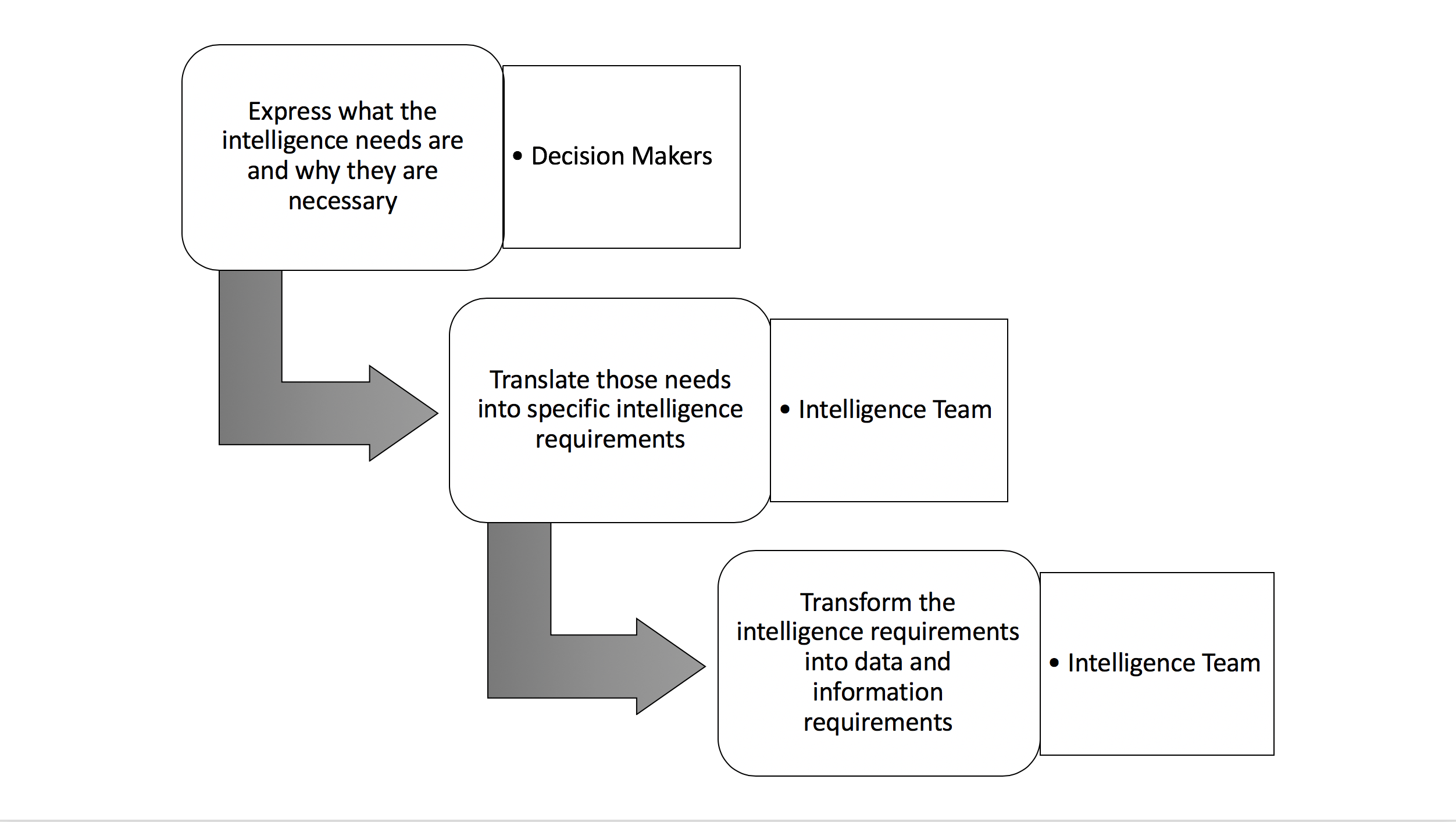Data-Driven Decision Making in Times of Crisis: What Data?
Authors: Dr. Lourival Carmo Monaco Neto, Postdoctoral Research Associate
Dr. Allan W. Gray, Executive Director and Professor
In our previous article (Data-Driven Decision Making in Times of Crisis), we discussed the importance of making decisions based on insights derived from data and information. In other words, the article focused on having an intelligence-driven approach to the decision making process. Decision makers need the right information at the right time in the most useful and trustworthy form to be able to make well-informed decisions in an uncertain environment. A key question arising from our intelligence framework is: What data/information is important? Or, more precisely, what data/information is necessary to inform our decision?
Generally speaking, more information is preferred to less, but we must recognize that timeliness in the decision process and information overload both limit the amount of data we should collect. The literature on decision making is fairly clear that too much information interferes with our decision making abilities. Many of us may experience this information overflow in our daily lives, particularly during this period of social distancing with increased time on our hands to collect information.
Having the capability to understand what information is needed for a particular decision is extremely important. It is even more important in periods with great uncertainty and a proliferation of data types and sources. Understanding the correct type and amount of data and information to collect during these times allows for more accurate and timely decision making.
In our last article, we explained how you can transform data into intelligence, as demonstrated in the following graphic:
Transformation of data into intelligence

Source: Adapted from STEFANIKOVAA and MASAROVAA, 2013.
To uncover data and information needed, we must move backwards in the graphic. That is, we must first understand the intelligence need in order to determine what data and information is necessary. This may seem a bit counterintuitive, but imagine that intelligence is something you achieve and data and information are things you can act upon to facilitate the intelligence achievement. The following framework illustrates how you can move upstream in this transformation process.
Intelligence to data and information framework

The first step is understanding the intelligence needs for a decision, which creates its own challenges. Three broad decision maker behaviors make it difficult to identify the right data and information to collect. These behaviors are:
- The reticent behavior: not actively asking or searching for information when a decision is going to be made. A decision maker that is reticent waits for someone to bring information to them that can support the decision rather than actively seeking information.
- The “I want it all” behavior: actively asking for all of the information possible or available regarding some important aspect of the decision at hand. The typical comment would be, “I need all the information you can gather. I don’t know exactly what information I need, but I will know it when I see it.”
- The “you tell me what I need” behavior: many decision makers are not sure of the information they need so they ask others to define the data and information needs, shifting the responsibility to others.
These three behaviors appear often in organizations and are observable amongst many of our public decision makers in the current pandemic. They are difficult to deal with, but as decision makers or decision supporters, we must recognize these behaviors and work to overcome them if we hope to improve our decision making.
To provide intelligence for decision makers, it is possible to have a reactive or proactive approach. A reactive approach takes a request for intelligence from a decision maker and tries to deliver the necessary data and information in as timely of a manner as possible. A proactive approach requires the team to interview the decision makers in order to help them identify and define their intelligence needs. This process involves more than one agent, which may increase its complexity, but also offers a much better result due to multiple points of view. A successful interview should not only yield the identification of intelligence needs, but also create an increased awareness of how different types of information are useful for the decision making process.
In general, intelligence and the attendant data and information needs fall into three key intelligence categories. These categories recognize the need to provide intelligence to decision makers that prompts them to make a decision, intelligence that facilitates strategic decisions and intelligence that facilities operational decisions. The following lists each category and examples of the type of data and information that could be needed to create the necessary intelligence.
1) Early Warning Intelligence – Leading indicators of impending change that require action by decision makers (mostly strategic decisions but may also include operational decisions). This requirea data and information to be transformed into intelligence in areas such as:
- Consumer/customer sentiment
- Macroeconomic policy shifts
- Demographic shifts
- Shifts in cultural norms
- Emerging technologies
- Political and legal shifts
2) Strategy Intelligence – Indicators that allow decision makers to develop strategies and positions to leverage opportunities and/or defend against threats. This requires data and information to be transformed into intelligence in areas such as:
- Market conditions
- Customer opportunities and challenges
- Competitor positions
- Supplier options and challenges
- Assessment of internal resources (tangible, intangible and human) and capabilities (processes, technologies, knowledge and culture)
- Identification of potential options to consider (retreat, grow, shift; partner, acquire, sell; recruit, retain, train; etc.)
3) Operational Intelligence – Indicators that allow decision makers to execute tactical decisions to improve the efficiency and effectiveness of day-to-day operations. This requires data and information to be transformed into intelligence in areas such as:
- Current and forecasted financial conditions of the firm
- Demand forecasts
- Supply chain positions (upstream materials and downstream inventories)
- Labor availability
- Process and quality control
- New project/product development
By classifying the intelligence needs of the decision maker into one of the key intelligence categories above, we can more readily narrow the information that is needed. Once we identify key data and information needs, we must identify where this information is, how to collect it, how to analyze or transform this information, and determine the strategies to best communicate the transformed data and information to the decision makers. Stay tuned for the next article in our series where we continue outlining this process.
Tags: Agribusiness, Agriculture, Analytics, competitive intelligence, Data, Data Analytics, Food, intelligence, Risk Management, Strategy
RELATED POSTS:
Optimizing Sales Management: Knowledge, Coaching and Continuous Improvement
While we used to think that exceptional salespeople possessed an innate gift, recent data suggests the impact of today’s sales managers in nurturing and refining this gift to unlock its fullest potential.
A great moment for value-based sales in agribusiness
Value-based sales can empower companies to craft compelling value propositions, understand the customer’s business model and effectively communicate to stakeholders.
How can big data empower the development of new products?
Data is one of the most powerful resources for a company. It enables accurate decision-making and minimizes risk, ensuring greater revenue and sustainable growth.
